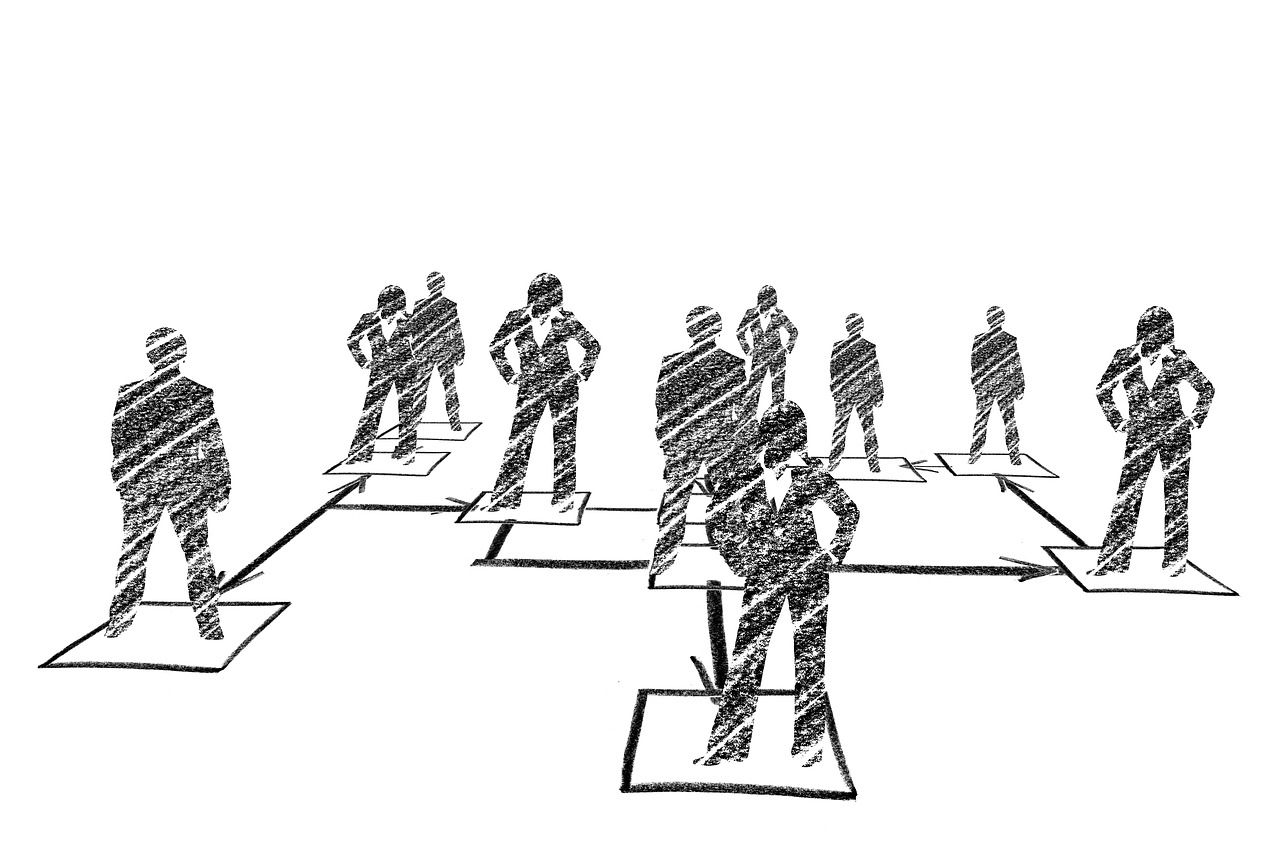The sieve model is a strategy of hiring employees and a way to assemble an increasingly qualified team. It is considered controversial, but it does not change the fact that your competitors may use it. So it's worth knowing what it is and what it involves.
- What is the sieve model?
- The sieve model in personnel policy
- The sieve model at the hiring stage
- Application in the daily functioning of the company
- The sieve model - advantages and disadvantages
- Does the sieve model always benefit the company?
- The sieve model and the human capital model
- Selection of employees according to the sieve model
What is the sieve model?
Entire volumes have been written on the theory and practice of recruitment. Among the theories on how to find the best employees, the sieve model is one of the more popular. It gives the company access to the best workforce on the market. However, there are some dangers associated with it that cannot be ignored.
The sieve model is grounded in the psychology of the individual and is based on the assumption that adults are shaped people and their behavior is very difficult to change. What does psychology have to do with looking for hands to work? Most models assume that the employee must be invested in and trained until he or she reaches the required level.

Meanwhile, the sieve model is based on the assumption that the most prospective units need to be selected from the labor market. Then, to select the best from among them, sifting out the rest. There is a certain analogy to customers here - definite target group these are the most prospective ones.
The sieve model in personnel policy
To be able to use the sieve model in personnel policy, you need to:
- define precisely the requirements for job candidates,
- conduct extensive recruitment to have access to the best, diverse candidates,
- make a precise selection,
- use reliable tools for measuring the quality and efficiency of work,
- respond to the growing expectations of the candidates we define as the best, and take care of them.
It is worth noting that failure to follow one of these steps may render the screen model ineffective.
The sieve model at the hiring stage
The sieve model must be implemented at the very beginning of the hiring process. You can carry out this type of recruitment both on your own and with an agency, although with the help of a specialist it will be easier due to his ready-made mechanisms and tools for assessing and verifying the competences of candidates. Sometimes they are even psychological tests or multi-stage series of tasks.

It cannot be denied that the sieve model in personnel policy is quite ruthless. So this is where the question may arise. Why would candidates look for a job in a company that will calculate their usefulness in a cold way? Who will subject them to exhausting tests and then brutally screen them out in the event of a stumble at work? In order not to run out of people willing to join a company with such a policy, you need to take care of the appropriate financial conditions as well employer branding. Especially the latter is important for the modern generation of 20- and 30-year-olds. Research shows that they are able to endure a lot if the company, even in the layer of declaration, upholds admired values and is accompanied by an appropriate atmosphere. Often, such tools are used by the best organizations in their industries, which are able to compensate employees for difficulties with the prestige that surrounds such a CV entry.
Are you ready to become an even better employer?
Bet on effective actions.
Application in the daily functioning of the company
The sieve model is the opposite of the model that is used, for example, in many state-owned companies. There, the competition can be fierce at the stage of looking for people to work. But after signing the contract, the employee often feels that he can calmly “rest on his laurels” - assuming that he will not be at risk of dismissal. This is not the case with the sieve model. Why? Because there is a continuous evaluation of the suitability for the company and comparing competences with other people in a similar position. You need to introduce such rules not only for new employees, which is relatively simple, but also for those working longer. On the one hand, the right results give employees a real chance for promotion and higher earnings. On the other hand, continuous evaluation of results does not give you any rest and requires constant readiness to prove your competences.
The sieve model - advantages and disadvantages
The sieve model has many advantages that can be easily distinguished. Above all, the company gets the best of the best. Objective evaluation prevents nepotism, and transparent rules give everyone a chance. The control of work effects and the employment process itself are transparent and can even be automated. All this contributes to greater efficiency in the company.

In addition to the advantages, the screen model also has disadvantages. Currently, employees can freely express themselves on the Internet (even anonymously) about the atmosphere in the company. Information about absolute layoffs and the "rat race" will eventually get out. In extreme cases, corporate suffers from it public relations. Regular appraisal of employees only on the basis of the latest achievements, and then firing the "worst" ones, is quite difficult to reconcile with the responsible social policy of the company (what about an employee who becomes pregnant or sick?). There is also no place for a family atmosphere in this model. It is also necessary to mention the costs of continuous recruitment, which must be repeated because Employees rotation in a stressful and demanding workplace is high.
It is worth recalling the case of a discount operating in Poland. At the beginning, he focused on maximum efficiency, high turnover and lack of sentiment when hiring female employees. It finally came to image crisis, after which the largest newspapers wrote about poor employment conditions. As a result, nobody wanted to work in this network. Today the situation is reversed. The employer, seeing that the market is changing in favor of the employee, offers a salary higher than the competition and numerous facilitations - incl. for students or parents. This shows that the sieve model in the market where the rules of the game are imposed by the employee may be difficult to implement.
Does the sieve model always benefit the company?
Operating in accordance with the sieve model is a chance to attract outstanding employees who can contribute a lot to the company. Thanks to their outstanding skills, they can significantly contribute to the development of the company, raise its position on the market and even help to become a leader in the industry.
For which companies is the sieve model the best? First of all, for those who appreciate professionalism, excellent quality and efficiency of the team's work. The sieve model works perfectly in companies operating on the employer's labor market, where there are fewer vacancies than candidates for a given position. Enterprises can select candidates. They invite a lot of people to recruit, check their skills, experience and competences, and then choose the one that best suits the profile of the ideal employee.
It is also a great solution for companies pursuing an aggressive policy based on reducing manufacturing costs. The sieve model assumes that employees are skilled enough, do not need additional courses - so the company can save.
Unfortunately, due to its specific assumptions, the sieve model is not beneficial for all companies. First of all, companies that focus on the development of employees (also young people who are at the beginning of their professional career) should be mentioned - they run pro-employment activities in the area of CSR. The sieve model does not provide for additional training and courses for employees that would improve their qualifications or support their development. However, many companies are taking a different path. They focus on people with high predispositions, charismatic personalities and create favorable conditions for them to develop, offering valuable, fair employee programs. They try to use the potential of their employees and invest in them.

The sieve model is not for companies that want to build relationships with their employees. According to the model's assumptions, a person who cannot cope with professional duties is replaced by another. The consequence of such action is high employee turnover. In such a situation, it is difficult to build a strong, well-functioning team that is strongly attached to the company.
The sieve model will not work in companies that focus on teamwork. In the model, rivalry and competition between employees are strongly noticeable. Each member of the company's team is aware of their high qualifications. Everyone wants to show their best side. Work is not based on competition and joint pursuit of a goal.
Are you looking for effective employer branding tools?
We will create a strategy tailored to your needs.
The sieve model and the human capital model
The opposite of the sieve model is the human capital model, which is based on the assumption that a person learns and changes throughout his life. The human capital model can function both on the employer's market (fewer vacancies than candidates) and the employee's market (more vacancies than candidates).
The human capital model makes it easier for young and less experienced people to find a good job. During the recruitment process, the candidate's personality and development predispositions are of the greatest importance, not the diplomas and certificates he has obtained. People with high development potential, loyal, willing to cooperate, non-conflict, positive attitude towards action and the surrounding world are accepted for work.
In a company operating according to the human capital model, employees feel safe. It is easier for them to establish a strong bond with the company, which reduces turnover and gives them an opportunity for development. Employees encouraged by a good employer branding policy are strongly involved in professional tasks that they perform with the greatest efficiency. The company has a friendly atmosphere that fosters productivity and creativity. Activities are carried out on a collaborative basis, and the risk of unhealthy competition emerging is at the lowest possible level.
Employees are hired with long-term cooperation in mind. The company does not anticipate layoffs. In case of difficulties, he offers help or transfers the employee to another position. The company invests in the development of its people by offering them training and further education programs. In a word, it puts on employer branding. The company provides employees with good employment conditions and a wide benefit package.
Does the human capital model have only advantages? It's not that beautiful. The downside may be the generation of considerable costs related to the need to invest in educating employees. Operating according to the human capital model may be associated with not very high work efficiency. People with lower qualifications will not perform their job tasks as effectively as experienced employees. Retraining of employed people is a long process. Therefore, be patient. Companies that operate according to the principles of the human capital model often practice internal recruitment, giving lower-level employees a chance for development. Unfortunately, this action limits the influx of new, fresh ideas and suggestions that could be brought in by outsiders.

The combination of the sieve model and human capital is a mixed model. During recruitment, attention is paid to the candidate's skills, diplomas and certificates, not to their personality. After employment, employees focus on development - they are treated as resources that need to be invested in.
Selection of employees according to the sieve model
Employee selection is one of the human resource management tools. It is the process of selecting the perfect employee by eliminating the remaining candidates. Selection is carried out by recruiters. It can be considered as one of the stages of the recruitment process that allows you to select the best person from among the candidates - in terms of knowledge, qualifications and skills, tailored to the company's profile.
The selection of employees should match HR policy model enterprises. How to carry out this process according to the principles of the sieve model?
The first stage of employee selection is the analysis of the CV and other submitted documents (such as portfolio or references), which will allow you to initially familiarize yourself with the qualifications of the candidates. Unfortunately, this process can be very time consuming - especially if you have a large number of applications for a position. Modern technologies are very helpful in the selection of applications - e.g. the eRecruiter system, which, after setting the appropriate questions in the form, filters and searches for the indicated candidates. Such action significantly reduces the list of potential candidates for the position and makes it easier to find the best qualified person - the one who will perfectly fit into the profile of the perfect employee of the company.
To get to know the candidates better and check whether they fully meet the requirements of the company and the specific position, invite them to interviews. Recruitment meetings should be conducted at the highest level and with full professionalism.

Another method of selecting employees are tests (knowledge or predisposition, task tests), which allow you to check the professional skills of employees. When recruiting for higher positions, it is worth considering the use of Assessment Center tools and techniques (assessment center / integrated assessment). It is a great way to check candidates in terms of their knowledge and qualifications by simulating the key dimensions of a job. Assessment Center provides a reliable, detailed forecast of the future effects of the candidate's work.
The selection of appropriate methods of employee selection depends on the selected type of selection. In the sieve model, the play-off selection is perfect, which is carried out at every stage of recruitment. The individual stages end with the rejection of some candidates.
Another type is compensatory selection, in which candidates go through all stages of recruitment and only at the end the best one is selected. The combination of the above types is mixed selection, where play-off selection is used at the beginning of recruitment, and compensatory selection is used at the next stages.

